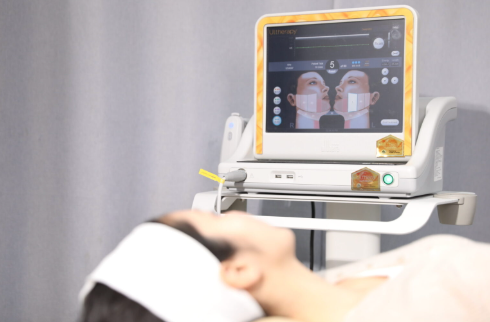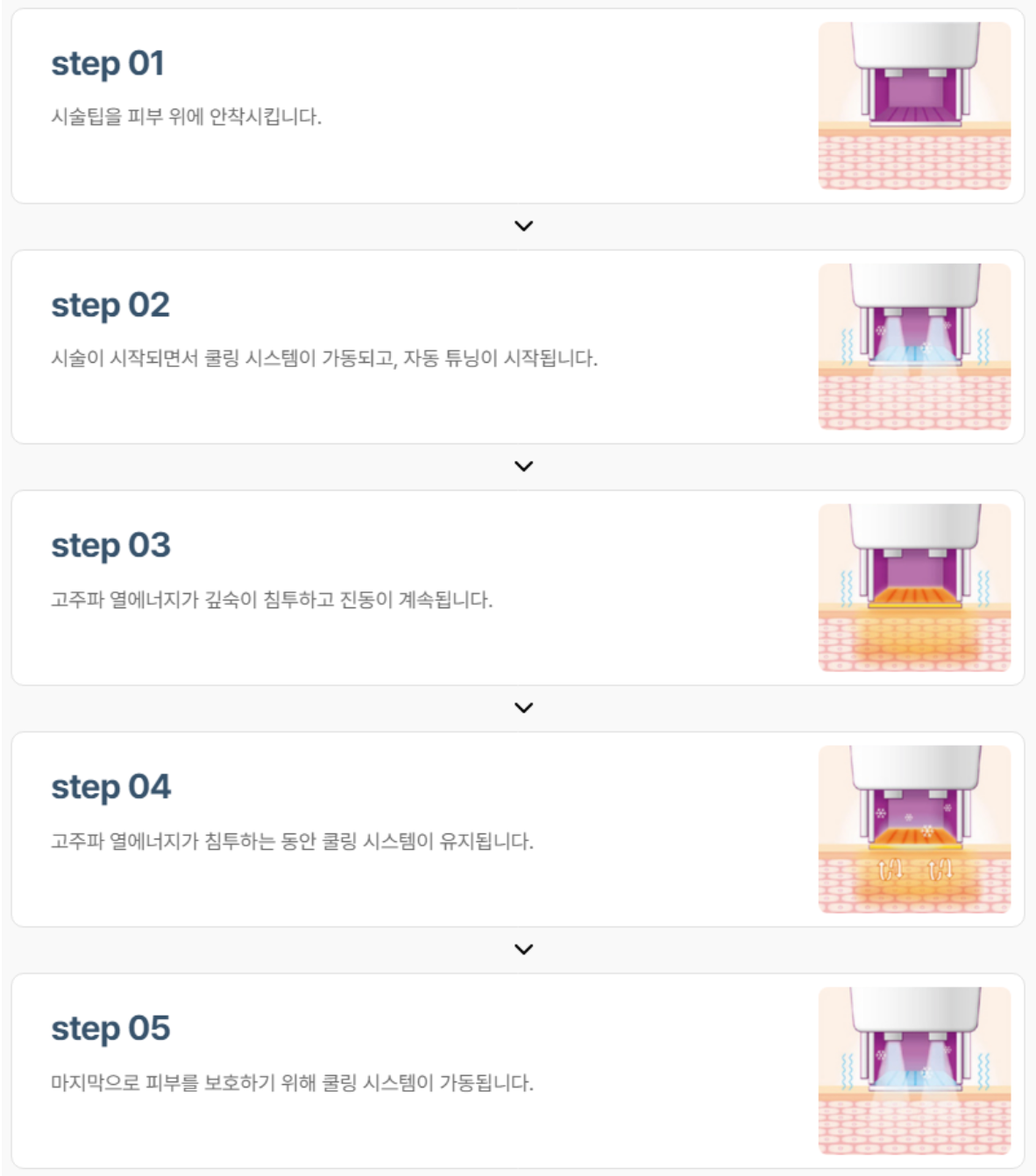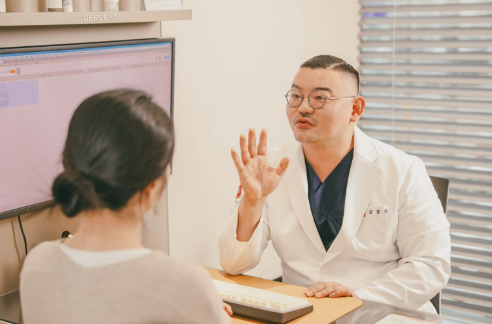Ultherapy and Thermage together: a cost-effective treatment
Do you know about Ultherapy and Thermage, the most popular laser treatments?
Aging is a completely natural process, but as we grow older, interest in anti-aging inevitably increases. People of all ages, from their 20s to seniors, visit dermatology clinics, proving that aging concerns are not limited to a specific generation. Just as there are various skin concerns, there are also numerous treatments available. Among them, Ultherapy and Thermage, which deliver intense thermal energy to the skin to stimulate regeneration, are gaining significant popularity.
What makes Ultherapy and Thermage so popular? One key reason is that they are non-invasive procedures that do not require surgical incisions. Since there is no recovery period for scars, they are an excellent choice for those who want a quick and convenient treatment during their time off.
Ultherapy and Thermage are considered the best laser treatments for achieving a natural lifting effect rather than a dramatic transformation from a single session, like thread lifting. While each treatment is effective on its own, they work even better when combined. Let's take a closer look at the unique features of each treatment and why they complement each other so well.
The Lifting Powerhouse: Ultherapy
Ultherapy Procedure
Is Ultherapy the most frequently mentioned treatment by celebrities on TV? Even those who are not particularly interested in skincare have likely heard of it at least once. Here’s how it works: The skin consists of several layers—epidermis, dermis, fat layer, and muscle layer. Between the fat and muscle layers lies the SMAS (Superficial Musculoaponeurotic System) layer, located 4.5mm beneath the surface.
Do you remember the science experiment where you used a magnifying glass to focus heat on a single point and burn paper? Ultherapy works on a similar principle. The key to this treatment is delivering high-intensity focused ultrasound (HIFU) energy to a precise point in the SMAS layer, causing tissue coagulation and contraction, which lifts the skin. In fact, facelift surgery also involves pulling and securing this SMAS layer.
Ultherapy's ultrasound technology can penetrate at depths of 1.5mm, 3.0mm, and 4.5mm, allowing for precise treatment based on the patient’s skin condition. By stimulating collagen regeneration, it effectively improves skin elasticity, reduces wrinkles, and provides fundamental skin rejuvenation. This is why Ultherapy is considered one of the most powerful lifting treatments available.
Ultherapy Treatment Areas
Ultherapy is highly effective for facial contouring. As we age, fat naturally accumulates in the lower face, leading to sagging. This treatment helps redefine facial contours, making it an excellent choice for areas such as the forehead, eye area, cheeks, mid-face, double chin, and even the front of the neck—essentially, any area in need of lifting. However, extra caution is required around the mouth, as nerves in this region are located closer to the surface. If the laser is improperly applied, it may cause temporary nerve damage. Therefore, it is crucial to undergo thorough consultation and diagnosis with an experienced doctor before the procedure.
Ultherapy Treatment Duration
The procedure time varies depending on the number of shots applied. As a rough estimate, 100 shots take about 10 minutes, and most sessions are completed within 30 to 60 minutes. If numbing cream is applied for pain relief, an additional 30 to 40 minutes should be factored in before the procedure. It’s best to plan for extra time to ensure a smooth experience.
Ultherapy Pain Level
Ultherapy is known to be quite painful. Since the treatment generates heat, patients often experience a deep, tingling sensation, and some may feel a dull ache in their teeth. The discomfort tends to be more intense in areas close to the bone. However, there’s no need to be overly worried—while the pain is noticeable, it is generally tolerable. Additionally, numbing cream, nerve block anesthesia, and sedation options are available to help manage discomfort, so patients can undergo the procedure with confidence.

With numbing cream, Ultherapy can be performed without major concerns.
Ultherapy Duration
While some immediate effects can be seen, collagen production typically begins responding one month after the procedure, with maximum results appearing in 2 to 3 months. The effects generally last up to one year, though many people opt for a follow-up treatment within 9 to 12 months. However, the longevity of results may vary depending on individual skin conditions.
Ultherapy Side Effects
The most well-known side effect is cheek hollowing. This occurs when the energy is delivered to the subcutaneous fat layer instead of the SMAS layer, causing fat contraction and volume loss. To prevent this, a skilled doctor and precise treatment planning are essential. Factors such as the number of shots per area, thickness of subcutaneous fat, facial contours, and the patient’s age must be carefully considered.
Additionally, temporary redness or swelling may occur but typically subsides within a few hours. Pregnant women and individuals with certain skin conditions should always consult a doctor before undergoing the procedure.
A Must-Have Tightening Treatment: Thermage
How Thermage Works
While
Ultherapy utilizes ultrasound,
Thermage uses
monopolar radiofrequency (RF) energy to
deliver heat to the dermis, where collagen and elastin are found. Think of a lightning rod—it attracts lightning and safely directs the current into the ground. Similarly,
high-intensity RF energy flows from the treatment tip to an
electrode pad placed on another part of the body, ensuring the energy targets
the dermis with minimal resistance. This heat stimulates
collagen contraction, remodeling, and regeneration, resulting in firmer, more youthful skin.

Unlike dramatic lifting procedures, Thermage is a skin-tightening treatment that strengthens and thickens the dermis, preventing premature aging. It is especially effective for fine lines and skin texture improvement, making it the perfect choice for those who want to age gracefully over time. That’s why it has earned the nickname “fine-line eraser.”
Thermage Treatment Areas
Thermage is used to improve sagging skin, enlarged pores, wrinkles, and skin texture on various areas, including the forehead, eye area, cheeks, jawline, and neck. Additionally, a specialized Thermage Eye Tip allows for delicate treatments around the eyelids and under-eye wrinkles, improving skin elasticity.
Recommended Shot Count for Thermage
Thermage treatment tips come in three options: 300, 600, and 900 shots. Unlike Ultherapy, which is categorized by depth levels (1.5mm, 3.0mm, 4.5mm), Thermage is categorized by shot count:
- 300 shots → For localized treatment
- 600 shots → For full-face treatment (most common)
- 900 shots → For full-face and neck treatment
While 300 shots are the most affordable, higher shot counts offer longer-lasting results and extend the time between treatments, making them a cost-effective choice in the long run.
Thermage Treatment Duration
A 600-shot full-face Thermage treatment typically takes 30 to 60 minutes, while 300 shots can be completed in about 20 minutes. Unlike Ultherapy, Thermage does not usually require anesthesia, though applying numbing cream may add 30 to 40 minutes to the total procedure time.
Thermage Pain Level
Thermage is less painful than Ultherapy, making it a more comfortable option for many patients. However, it is important to feel some heat during the procedure since the treatment relies on thermal energy to achieve results. Avoid deep sedation, as the doctor needs to adjust the intensity based on your feedback for optimal effectiveness.
Thermage Results & Longevity
With 900 shots, results can last for one year or more. The standard 600-shot treatment typically lasts 9 to 12 months, with many patients returning for follow-ups within that time. After achieving initial tightening effects, a maintenance session every six months is recommended for prolonged benefits.
Thermage Side Effects
Since high-intensity RF energy is used, potential side effects include burns, redness, blisters, and swelling. However, these are typically temporary and subside within a short period. Consulting an experienced doctor can help minimize risks and ensure a safe, effective treatment.
Why Ultherapy & Thermage Work Well Together
Improving Both Skin Elasticity & Wrinkles
Ultherapy and Thermage complement each other perfectly because they target different skin layers with different energy sources.
- Ultherapy: Uses ultrasound energy to penetrate deep into the SMAS layer (muscle fascia), lifting and tightening the skin from within.
- Thermage: Uses radiofrequency (RF) energy to stimulate collagen in the dermis, improving skin texture, fine lines, and elasticity.
By combining both treatments, you can achieve both deep lifting and surface tightening, making it an efficient anti-aging solution. Since skin laxity and wrinkles usually appear together, treating both layers simultaneously maximizes results.
A Cost-Effective Approach to Anti-Aging
Since both treatments work by stimulating collagen regeneration with thermal energy, combining them strategically can enhance their efficiency while reducing the number of shots needed.
When performed together:
- The first treatment gradually raises the skin temperature, making it easier for the second treatment to reach the target heat level faster.
- Fewer shots are needed to achieve the desired effect, optimizing results while minimizing discomfort.
- If lifting is the primary goal, start with Ultherapy, then follow up with Thermage.
- If tightening and texture improvement are the focus, Thermage should come first, followed by Ultherapy.
However, whether you can receive both treatments on the same day depends on your skin sensitivity, facial structure, and overall condition. That’s why consulting a highly skilled and experienced dermatologist is crucial for safe and effective results.

For optimal Ultherapy & Thermage results, a thorough consultation with an experienced specialist is essential.
Why Ultherapy & Thermage Work Well Together
Both Ultherapy and Thermage are known to be premium treatments due to:
- The high cost of advanced medical devices used.
- The expensive consumable tips required for each session.
Pricing varies significantly depending on the clinic, doctor’s expertise, and treatment approach. Searching online may not always provide clear pricing information since every patient’s needs are different. The best way to determine the right treatment plan and cost for you is to visit a trusted clinic and consult directly with an experienced doctor. Look for a specialist with a clear treatment philosophy and extensive experience to ensure optimal results.
"Ready for glowing, healthy skin? 💖 Book your consultation with VOS Dermatology clinic today, and let’s start your journey to confidence! Our friendly team will get back to you as soon as possible. 🌟 Don’t wait—your best skin is just a form away!"
Contact Us
We will get back to you as soon as possible.
Please try again later.
VOS Dermatology Clinic is a premier skincare destination in Seoul, specializing in advanced dermatological treatments tailored for international patients. Our expert team provides personalized care using state-of-the-art technology for skin rejuvenation, anti-aging, acne treatment, and non-invasive lifting procedures. Experience professional, results-driven skincare in a comfortable and modern environment.
- Address : 806 Eonju-ro, Gangnam-gu, Seoul, 1st–4th Floor (Exit 3, Apgujeong Station)
- Phone Consultation
+82-10-9705-5516










